Classic 1979/80 Lincoln Mark VI Signature Series 4dr 351 cu new reman. 5.8 L, ga
1980 Lincoln Mark Series Good sweet for sale in Tucson, Arizona, United States
| Item location: | Tucson, Arizona, United States |
| Make: | Lincoln |
| Model: | Mark Series |
| SubModel: | Mark VI Signature 4dr |
| Type: | Cab & Chassis |
| Trim: | Good sweet |
| Year: | 1980 |
| Mileage: | 100,204 |
| VIN: | 0Y90G625277 |
| Color: | Burgundy |
| Engine size: | 351, 5.8 L |
| Number of cylinders: | 8 |
| Power options: | Air Conditioning, Cruise Control, Power Windows |
| Fuel: | Gasoline |
| Transmission: | Auto overdrive |
| Drive type: | RWD |
| Interior color: | Red |
| Drive side: | Left-hand drive |
| Safety options: | Shoes, Driver Airbag |
| Options: | Velour Interior Messaging Center 40 ch CAB radio, Large Trunk seat belts all around, 4dr, Cassette Player |
| Vehicle Title: | Clear |
| Want to buy? | Contact seller! |
Description for Lincoln Mark Series 1980
Wiki Loves Monuments: Photograph a monument, help Wikipedia and win!Open main menu- Edit
- Watch this page
- Read in another language
TheContinental Mark VIis a full-size luxury car that was produced byFord Motor Companyand marketed by itsLincolndivision from 1980 to 1983. As a response to federal fuel economy standards, the Mark VI was the first model of theMark serieswith smaller exterior dimensions than its predecessor. Sharing powertrain and many body panels with the 1980Lincoln Continental, it was based on the then-newFord Panther platform. As the flagship line of the entire Ford Motor Company, the Continental Mark VI offered some features that were not available on the Town Car.
| 1980 Continental Mark VI Signature Series 4-door |
| Ford Motor Company |
| 1980-1983 |
| United States:Wixom, Michigan (Wixom Assembly) |
| John Aiken (1976)[1] |
| Full-sizepersonal luxury car |
| 2-door sedan 4-door sedan |
| FR layout,body-on-frame |
| Ford Panther platform |
| Lincoln Continental(1980) Lincoln Town Car(1981-1989) |
| 302cuin (4.9L)5.0LV8 351cuin (5.8L)WindsorV8 (1980 only) |
| 4-speedAODautomatic |
| 2-door: 114.4in (2,910mm)[2] 4-door: 117.4in (2,980mm)[3] |
| 2-door: 216.0in (5,490mm)[2] 4-door: 219.2in (5,570mm)[3] |
| 78.1in (1,980mm)[2] |
| 2-door: 55.1in (1,400mm)[2] 4-door: 55.8in (1,420mm)[3] |
| 3,892-4,219lb (1,765-1,914kg)[4][5] |
| Lincoln Continental Mark V |
| Lincoln Continental Mark VII |
For the first time since 1960, the Lincoln Mark Series was produced in multiple bodystyles. Along with the familiar 2-door sedan, Lincoln reintroduced a 4-door sedan body style. All Continental Mark VIs were produced at Ford'sWixom Assembly Plantin Wixom, Michigan.
The Mark VI was replaced by theMark VIIin 1984, which returned to a coupe-only body style.
ContentsDevelopmentEditDuring the mid-1970s, the Mark VI successor to the Continental Mark V began life based on what would become theFord Fox platform, as a companion to the 1980 Ford Thunderbird and Mercury Cougar XR7.[1]However, due to budgetary constraints, Ford product planners chose a different direction for the Mark VI. Based on the success of its predecessors, Ford executives (led by Lee Iaccoca) sought to expand the Mark product line into its own model family, reviving an approach previously used in 1956 with theContinental Division. Developed alongside the traditional Mark coupe was a four-door sedan, a four-door woodgrained station wagon, and a premium 2-seat coupe.[1]Following the firing of Lee Iaccoca in 1978, the expansion of the Mark was limited to the four-door sedan.
The budgetary constraints at Ford at the late 1970s required the new Mark VI to be produced at a minimum cost; to do so, the project was moved from the Fox platform to the Panther platform used by the 1980 Continental/Town Car.[1]While it meant a smaller degree of downsizing than intended (and it would be far larger than the redesigned Cadillac Eldorado and Chrysler Cordoba), it would an intermediate step down from its Mark V predecessor. Additionally, its high degree of parts commonality with the Continental, Town Car, and mass-market vehicles such as the Ford LTD would require fewer vehicles to be sold for the project to be profitable.
OverviewEditChassisEditThe Continental Mark VI is based on theFord Panther platform, shared with the Lincoln Town Car and other Ford Motor Company full-size cars of the 1980s into the late 2000s in North America. The Mark VI is rear-wheel drive with body-on-frame construction; it is fitted with coil-spring suspension on all four wheels.
In comparison to the Continental Mark V, the Mark VI is 800 pounds lighter and nearly 14 inches shorter than its predecessor. The Mark VI is the only version of the Panther platform that is built on two different wheelbases. The four-door sedan shares the 117.4 wheelbase with the Lincoln Continental/Town Car; the two-door utilizes the 114.4 wheelbase shared by the Ford and Mercury variants prior to 1998.
In order to remain in compliance with increasingly stringent federal fuel economy standards (underCAFE, Ford Motor Company was required to average 20.0 MPG for all of its vehicles for 1980), significant changes were made to the powertrain for the Continental Mark VI. The 460 and 400 cubic-inch V8s seen in the Mark V (and the Mercury Grand Marquis and Lincoln Continental) were replaced in favor of much smaller V8 engines. The standard engine for the Mark VI was a 129-hp 302 cubic-inch V8. Essentially the Windsor V8 shared with the Versailles, the Ford LTD/Mercury Marquis, and the Ford full-size trucks, the engine was the first V8 sold by Ford with fuel injection; to denote the engine, it was marketed by its 5.0L metric displacement (slightly rounded up from the correct 4.9L figure). As an option, a 140-hp 351 Windsor (5.8L) V8 was available; it was sold with an electronically-controlled variable-venturi 2-barrel carburetor. After 1980, the 351 was discontinued on the Mark VI, due to poor sales and the lack of a distinct power advantage over the 5.0L V8.
Introduced for 1980, theAOD automatic transmissionhelped raise the fuel economy of all full-size cars at Ford; instead of the commonly seen 3-speed layout, it boasted a 4-speed overdrive configuration, which significantly lowered engine RPMs (and fuel consumption) at highway speeds. The AOD was standard equipment on the Continental Mark VI, the Lincoln Continental, and the Lincoln Town Car, spreading to the Ford and Mercury lines in 1981.
| FordWindsor V8(5.0L)[2] | 4.9L (302cuin) | 1980-1983 | 129hp@3600RPM | 231lb-ft@2000RPM | 4-speedFord AODoverdrive automatic |
| FordWindsor V8(351W)[3] | 5.8L (351cuin) | 1980 | 140hp@3400RPM | 265lb-ft@2000RPM |
As the Mark V remained popular towards the end of its production, much of its sharp-edged styling was carried over onto Panther-platform Lincolns. Much like the roofline of the Continental/Town Coupe carried over to the 1980 model, the roofline of the Mark VI remained similar to the Mark V (although instead of a hardtop roofline, the Mark VI now wore a fixed B-pillar with framed door glass).
The Mark VI had more ornate styling than theTown Car, befitting its place on top of the model line. It sported vacuum-operated concealed headlamps, non-functional fender vents, ovalopera windowson the C-pillars, a "Continental-esque" trunklid, and a slightly different grille. An unusual optional feature, called "touring lights", were installed externally on the concealed headlamp doors, which gave an appearance of being headlights, when the actual headlights were behind the doors. The touring lights would only turn on if the headlight switch was in the parking light position, and gave a soft glow, but didn't provide enough light to drive in dark conditions. This generation was also installed with Ford's "Auto Lamp" feature, and if the system was active, the touring lights would not be used when the conventional headlights came on. The touring lights also did not function asdaytime running lights.
The Mark VI also was one of the first cars seen with several features commonly seen today; it came with the all-newKeyless Entry System, digital instrumentation (VFD), and trip computer. Also, it was the first year for theEEC IIIengine management system which kept fuel economy high and emissions low, an industry first.
TrimEditSignature SeriesEdit1980 Mark VI Signature SeriesFor 1980, the Signature Series was available in both coupe and sedan formats. This edition was a successor to the 1979 Collector's Series option package and included most Lincoln options. These cars were available in either burgundy or silver exterior colors. The only interior color was red, in either leather or velour. Unique features included a rechargeable glove box flashlight, special seat sew pattern, gold and Macaser Ebony wood treatments and a complete digital instrument cluster with fully electronically controlled EEC III engine with a 4-speed AOD, and a leather-bound tool kit in the trunk. When first introduced in September 1979, final cost could exceed $24,000USDwhich converts to approximately $79,197 in today's dollars.
In 1981, the Signature Series edition was offered again in red or silver, with a choice of black or white exterior colors being added near the end of the model year. The interior color on these Signature Series cars was red only, in leather or velour. For 1982 and 1983, the Signature Series carried on but lost its exclusive colors as these cars were now available in any exterior color and any interior color. The tool kit and glove box flashlight were no longer featured as well.
Designer EditionsEdit1980 Mark VI Bill Blass Edition1983 Continental Mark VI Pucci EditionLincoln offered designer editions for the Mark VI Coupe in 1980. These were theCartier,Pucci,Bill Blass, andGivenchyversions. Each designer edition carried exclusive exterior and interior color combinations, as well as more optional equipment over the standard model.
The designer editions were offered in 1981 for the coupe model only. These included Bill Blass, Cartier, Emilio Pucci, and Givenchy. In 1982 designer editions received a shuffle of sorts as the sedan was now available as an Emilio Pucci edition removing this package from the coupe. The remaining designers-Bill Blass and Givenchy-were available on the coupe; the Cartier edition was dropped from the Mark VI and moved to the Town Car.
For 1983, the Givenchy Edition was dropped and model line-up consisted of the standard coupe/sedan, the Signature Series coupe/sedan, the Bill Blass Edition coupe, and the Emilio Pucci Edition sedan. The Blass edition retained its "carriage roof" (convertible-look) and a unique exterior paint combination exclusive to the model in either vanilla/black/vanilla, or black/vanilla/black. The Emilio Pucci Edition shared this roof treatment for 1983 and had a unique exterior color combination of Dark Blue Cambria cloth top and Blue Flannel Mist body. The coupe version of the Emilio Pucci Designer edition was a mid-year introduction.
SalesEdit| 1980 | 38,391 |
| 1981 | 36,398 |
| 1982 | 26,336 |
| 1983 | 30,856 |
| Total | 131,981 |
- Lincoln Town Car
- Ford Panther platform
| Wikimedia Commons has media related toLincoln Mark VI. |
- Terms of Use
- Privacy
- Desktop
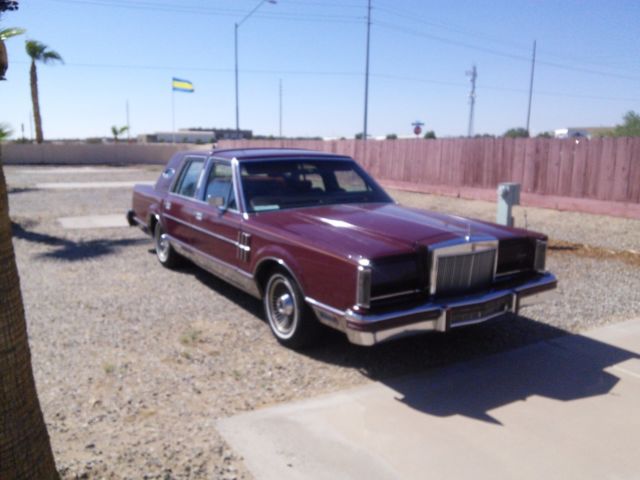
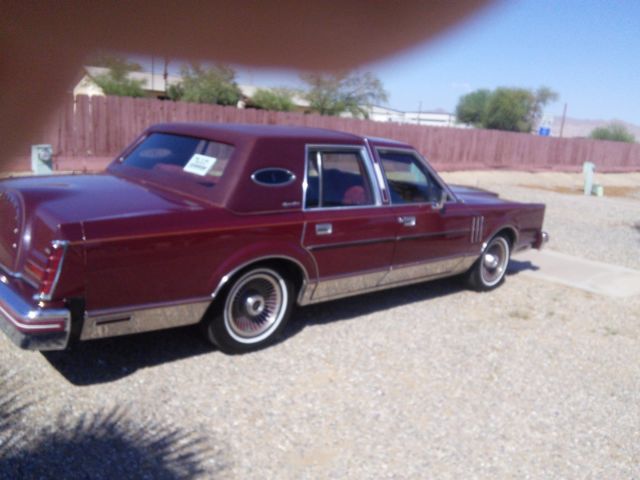
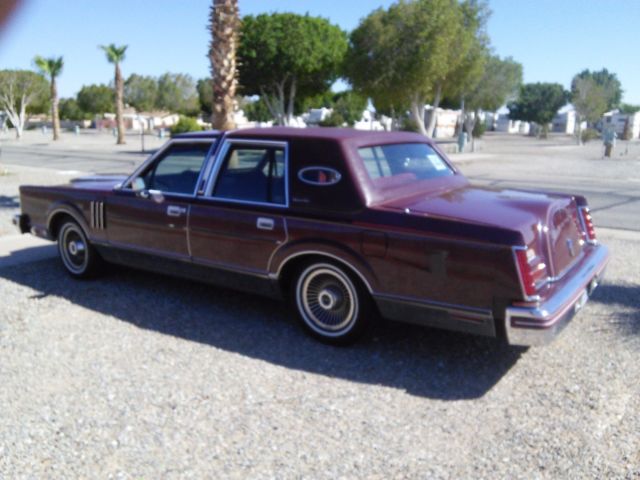

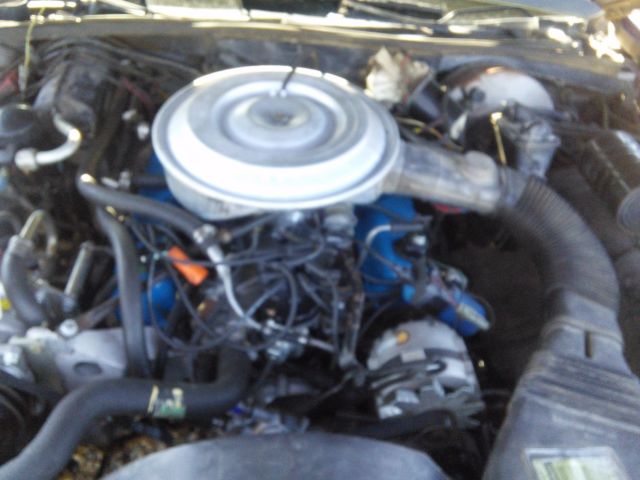
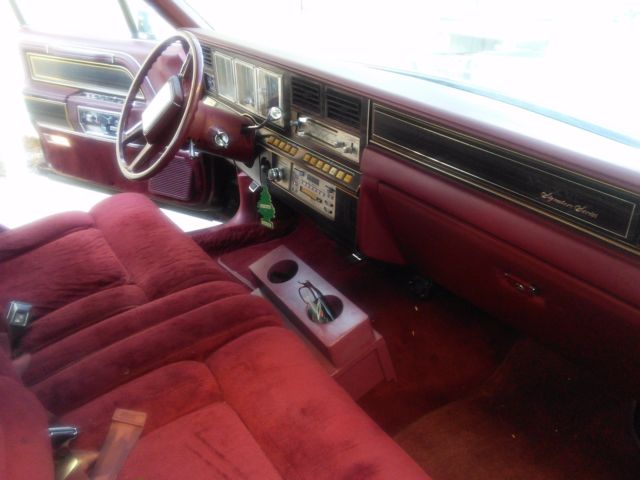
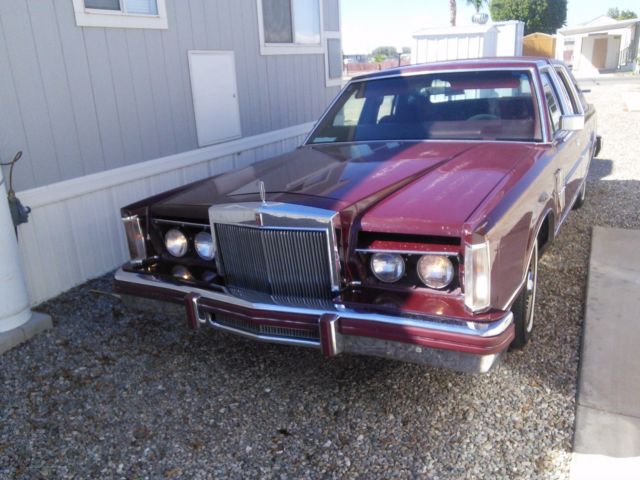
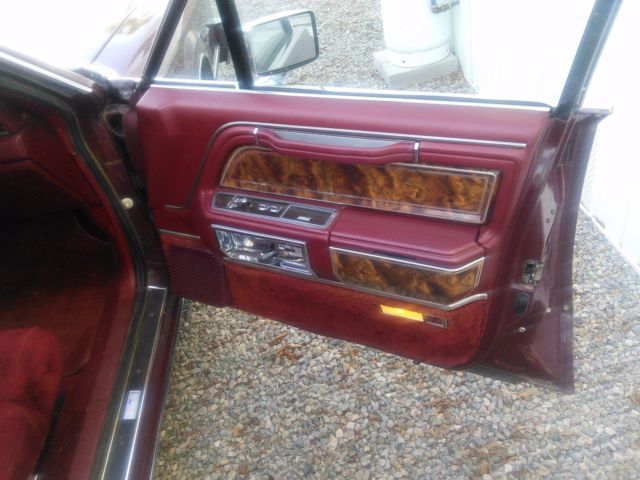


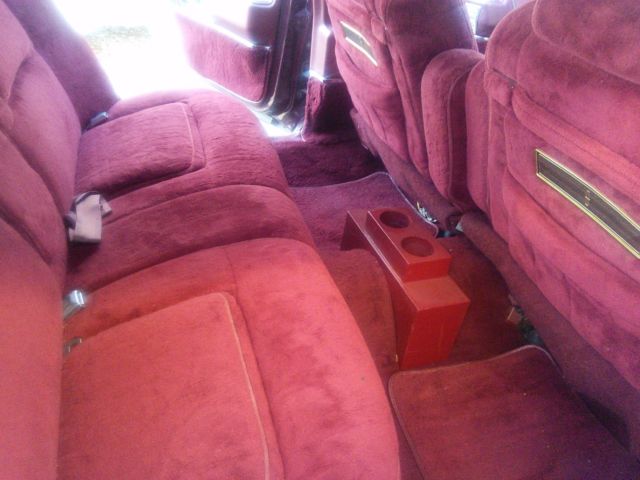

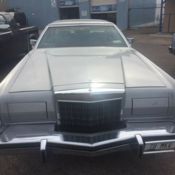 Rare 1978 Signature Series Lincoln Continental Mark V - Emilo Pucci Series
Rare 1978 Signature Series Lincoln Continental Mark V - Emilo Pucci Series
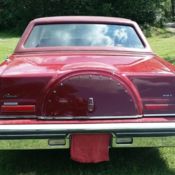 1983 Lincoln Mark VI Signature Series
1983 Lincoln Mark VI Signature Series
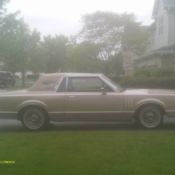 1982 Lincoln Mark VI Signature Series
1982 Lincoln Mark VI Signature Series
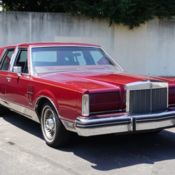 1982 Lincoln Continental Mark VI Signature Series
1982 Lincoln Continental Mark VI Signature Series
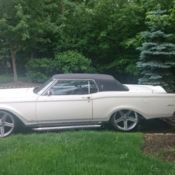 1970 Lincoln Continental Mark lll signature series
1970 Lincoln Continental Mark lll signature series
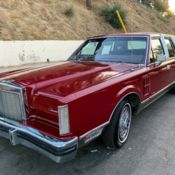 1983 Lincoln Continental Mark VI Signature Series - Only 17,576 Miles!
1983 Lincoln Continental Mark VI Signature Series - Only 17,576 Miles!
 1983 Lincoln Continental Mark VI Signature Series Sedan
1983 Lincoln Continental Mark VI Signature Series Sedan
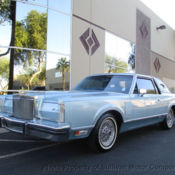 Lincoln Continental Mark V1 Signature Series, Vintage, Collector Quality AZ Matt
Lincoln Continental Mark V1 Signature Series, Vintage, Collector Quality AZ Matt